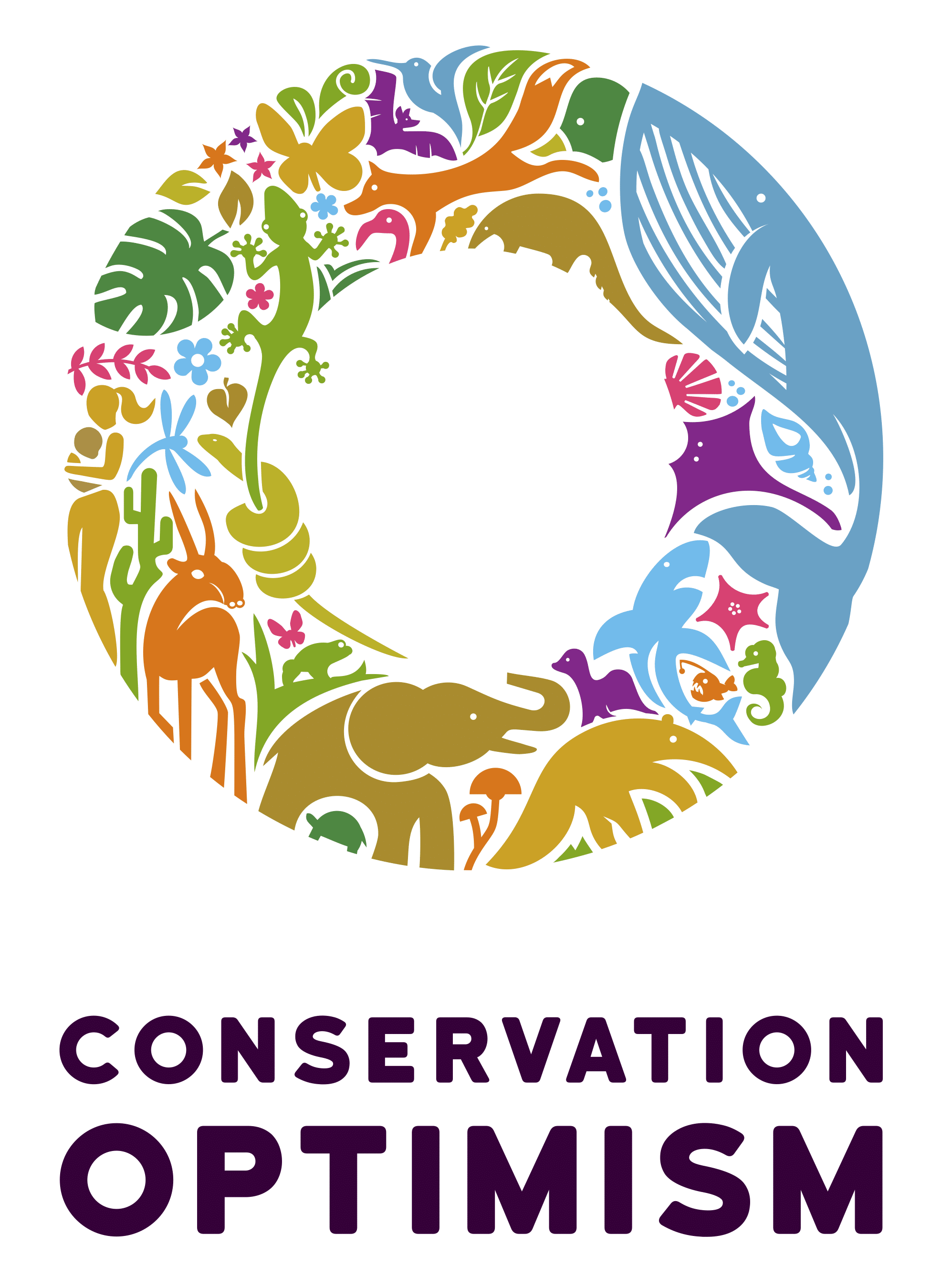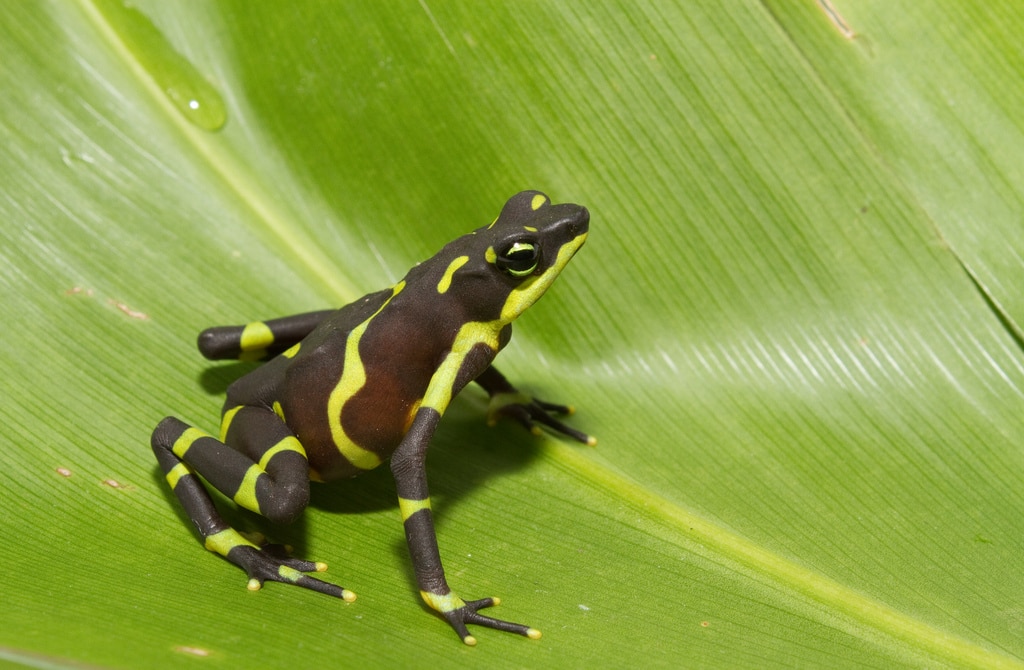Wondering what went right this week in the conservation world? We’ve got you covered with our Conservation Optimism Round-Up! We are collating stories of optimism from around the globe so that you never miss your dose of weekly motivation. (Featured image credit: Smithsonian Conservation Biology Institute / Flickr)
1. ‘The Ark’ in Panama gives rare frogs and amphibians a fighting chance against deadly fungus
An amphibian-killing fungus called ‘chytrid’ has put countless species at greater risk of extinction, but the Panama Amphibian Rescue and Conservation Project is aiming to turn the tide. Using advanced technology, innovative solutions, and tireless dedication, scientists are working to give these species a chance to bounce back.
To learn more about their crucial work and the crisis faced by these rare and wonderful amphibian species, check out the full feature ‘The Frog Ark’ here. Plus, learn how you can help amphibians where you live by setting up a frog pond and toad house, here, including tips you can follow with limited space!
What is the Frog Ark? 🐸 Many of the world’s most beloved frogs and amphibians are headed for extinction, but inside “The Ark” in Panama, some of those threatened species are being given a fighting chance.
— National Zoo (@NationalZoo) March 20, 2025
The Ark at the Panama Amphibian Rescue and Conservation Project houses an… pic.twitter.com/GIJV4BR8nK
2. Celebrating World Serval Day, learn how these clever wildcats have adapted to an unlikely home
“A new study finds that servals have surprisingly high densities in the Sasol Secunda petrochemical industrial complex in Mpumalanga, South Africa. The study authors concluded that this wildcat, native to sub-Saharan African wetlands and savannas, can adapt to anywhere it can find abundant prey, no matter how disturbed by human presence.
“Highlighting the benefits of industrial sites for wildlife must, however, be contextualized to ensure that preserving natural habitats remains the priority, according to another cat expert.”
🌍🐆 It's World Serval Day! 🐾 Last year, a study revealed that servals are thriving in an unexpected place — the Sasol Secunda petrochemical industrial complex in South Africa, proving that these wildcats can adapt wherever prey is abundant, even in human-altered landscapes.Read more:
— Mongabay (@mongabay.bsky.social) March 18, 2025 at 9:36 PM
[image or embed]
3. How the Omushkego Cree are safeguarding marine ecosystems in James Bay and Hudson Bay
A hotspot for polar bears and a haven for millions of shorebirds and waterfowl, the area around James Bay and Hudson Bay in Ontario, Canada, has long been understood as important by the indigenous peoples that have lived there for millennia, and continue to call it home today. With support from various non-profit organizations, “The Omushkego Cree are leading an effort to establish an Indigenous-led National Marine Conservation Area (NMCA) that would protect 91,000 km2 of [this region] from oil and gas exploration, mining, ocean dumping, and industrial fishing.”
Since then, the First Nations and the Canadian government have made great progress towards officially establishing the area, while also providing interim protections. You can keep track of the project’s status and find more information here. And learn more about the beauty and importance of this ecosystem in the Audubon Society’s post here.
Hudson and James Bays marine ecosystem's importance to wildlife has long been known by the Indigenous communities who have inhabited the area for millennia & continue to do so now. Learn how the Omushkego Cree are leading conservation efforts there: https://t.co/LU8orSHdPK pic.twitter.com/FoyLayyh4b
— Audubon Society (@audubonsociety) March 23, 2025
4. South African High Court rules in favor of new no-fishing zones to protect critically endangered African Penguin
From a statement by BirdLife South Africa and SANCCOB (Southern African Foundation for the Conservation of Coastal Birds), they have secured a “historic victory” after a prolonged legal battle to establish no-fishing zones around key African Penguin breeding colonies, preventing commercial sardine and anchovy fisheries from operating in their foraging area.
BirdLife South Africa’s Seabird Conservation Programme Manager, Dr Alistair McInnes, added that the outcome of these new zones “will also benefit other marine predator species, […] and other socio-economically important fish that also eat sardine and anchovy, as well as the livelihoods of many who derive benefits from marine ecosystems that are equitable and judiciously managed.”
High Court victory for the Critically Endangered African Penguin. We are proud to share that an out of court settlement has been reached, which was subsequently endorsed by the DFFE. Click on the link to read the full press release:https://t.co/H3RhVlddmw… #SaveTheAfricanPenguin pic.twitter.com/VtsTtKWPrE
— SANCCOB (@SANCCOB) March 19, 2025
5. A look at community-led, gender-equal conservation in Baan Thung Yao, Thailand
In this case study from the Stockholm Environmental Institute, learn how a small community in Northern Thailand is paving its own path in conservation and forest management. By bringing together the whole community’s expertise and ensuring meaningful participation of women, they have been able to resist top-down, ‘fortress conservation’ initatives that would ban the community from their ancestral forest, while also protecting and managing their natural resources with local wisdom and community voting.
This #ForestDay, we celebrate Baan Thung Yao in #Thailand, a forest community that prioritizes local participation and gender-equal decision-making to ensure ecological and human dignity in resource conservation.
— SEI Asia (@SEI_Asia) March 21, 2025
Discover their best practices ➡️ https://t.co/3zqrb3GbR1 pic.twitter.com/bUd7ZBdi0V
6. Zoologist rediscovers grasshopper species once thought extinct
The last documented sighting of the Appalachian Grasshopper was back in 1946, but thanks to data from citizen science platform iNaturalist, Virginia zoologist Andrew Rapp decided to investigate what he thought might have been new sightings. “It’s very restricted in its range, but I think that there were just not enough surveys in the right particular habitat, the right time of year,” Rapp told the News & Observer.
Some people believed the Appalachian grasshopper was extinct, since it hadn’t been seen since 1946. But a zoologist with the Virginia Department of Conservation and Recreation recently discovered one in the wild.
— The Wildlife Society (@wildlifesociety) March 21, 2025
Read more 👇https://t.co/Ij9WANPh53
7. American Oystercatchers make a comeback in hard-earned conservation victory
“Fifteen years of coordinated conservation efforts have produced a significant recovery in the U.S. population of the American oystercatcher, a bird with a distinctive bright red bill that breeds and roosts on beaches and coastal marshes, at a time when most shorebirds are declining.
The American Oystercatcher Recovery Campaign, a coalition of about 40 conservation private nonprofits and government agencies across the United States, reported a 45 percent increase in the number of oystercatchers from 2008 to 2023, bringing the total population to an estimated 14,735 birds.”
Are these birds cool or what? Their recovery is my news to me good news for Mar 21. #BeyondTheObituaries #EarthOptimism #OceanOptimism https://t.co/VlPA57wG2C
— Dr. Nancy Knowlton (@SeaCitizens) March 22, 2025
Have a story to share for our weekly round-up? Use #ConservationOptimism on Twitter, Facebook, LinkedIn and Instagram!


